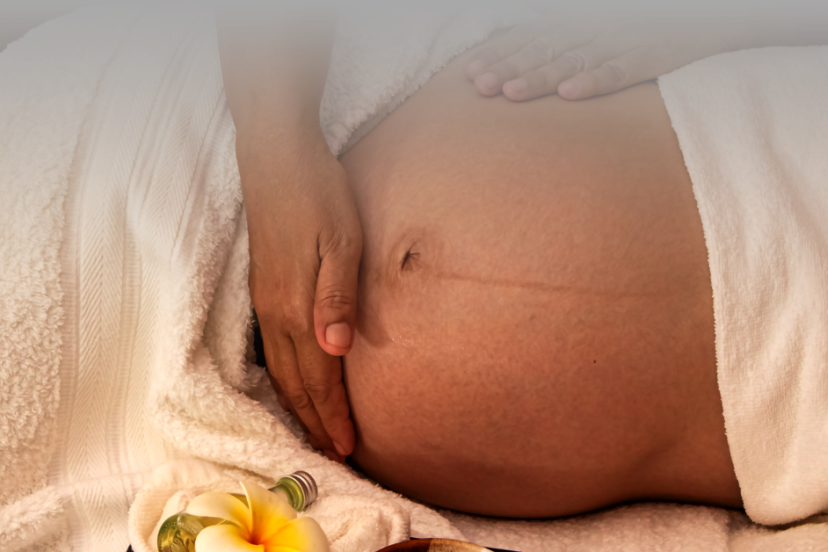How to Deal with Back Pain after C section
What is a C Section
Before getting into the article on how to deal with back pain after C section, if is important to understand what a C Section is. A Cesarean Section, commonly referred to as a C section, is a surgical procedure performed to deliver a baby through an incision made in the mother’s abdomen and uterus. It is typically carried out when vaginal delivery is not possible or poses risks to the mother or baby.
While a C section is a relatively safe procedure, it does come with potential risks and complications that can contribute to back pain. Here are some associated risks:
Anesthesia-related Back Pain:
The administration of anesthesia during a C section can sometimes cause localized back pain or discomfort. This pain is usually temporary and subsides as the effects of anesthesia wear off.
Surgical Incision Pain:
Following a C section, the incision site can be a source of discomfort. The healing process may involve pain or sensitivity around the incision area, which can radiate to the back.
Muscular Strain:
During the procedure, the abdominal and back muscles may be stretched or manipulated, leading to strain or muscle spasms. This strain can contribute to back pain during the recovery period.
Poor Posture and Body Mechanics:
After a C section, mothers often experience temporary changes in posture due to discomfort or physical limitations. Poor posture and improper body mechanics while caring for the newborn can put additional strain on the back, potentially leading to back pain.
Scar Tissue Formation:
The formation of scar tissue at the incision site is a natural part of the healing process. In some cases, scar tissue can cause adhesions or restrictions in nearby tissues, including muscles and connective tissues, leading to localized or referred back pain.
It’s important to note that while back pain can be a common occurrence after a C section, each individual’s experience may vary. It’s advisable to consult with a healthcare professional for a proper evaluation, guidance, and personalized recommendations to manage and alleviate back pain following a C-section.
Back pain after a C section can be a challenging issue for many women. In this article, we will explore the causes of back pain after a C section and provide remedies to help alleviate the discomfort. It is important to note that this article offers informal advice and should not replace professional medical guidance.
Understanding Back Pain after C Section
After undergoing a C section, it is not uncommon for women to experience C section related back pain. The physical and hormonal changes during pregnancy, as well as the surgical procedure itself, can contribute to this discomfort. The abdominal muscles, pelvic floor, and ligaments play a vital role in supporting the back, and any imbalances or weaknesses in these areas can lead to back pain.
Causes of Back Pain after C Section
There are several factors that can contribute to back pain after a C-section. One of the primary causes is the surgical incisions and the formation of scar tissue. The presence of scar tissue can affect the flexibility and mobility of the surrounding muscles, leading to discomfort.
Changes in posture and body mechanics during pregnancy and after the surgery can also impact the back. The increased weight during pregnancy and the altered posture can put strain on the back muscles and spine. Hormonal fluctuations and ligament laxity further contribute to instability in the back, leading to pain.
Muscular imbalances and weakness, which may develop during pregnancy or due to the surgical procedure, can also cause back pain. Additionally, prolonged bed rest or inactivity during the recovery period can weaken the muscles and exacerbate the pain.
Remedies for Alleviating Back Pain
While every individual’s situation is unique, there are several remedies that can help alleviate back pain after a C section. It is important to consult with a healthcare professional before trying any of these remedies.
Exercise and Stretching
Engaging in gentle exercises and stretching routines can help strengthen the core muscles, improve posture, and relieve tension in the back. Targeted exercises for the abdominal muscles, back muscles, and pelvic floor can aid in restoring strength and stability.
It is crucial to start with low-impact exercises and gradually increase intensity and duration. Exercises such as pelvic tilts, gentle yoga poses, and walking can be beneficial. However, it is important to avoid high-impact activities that may strain the back.
Posture and Body Mechanics
Maintaining proper posture and body mechanics is essential for reducing strain on the back. It is advisable to maintain a neutral spine alignment while sitting, standing, and lifting objects. Using supportive pillows or cushions while sitting or lying down can provide additional comfort and support.
During activities like lifting or carrying your baby, it is crucial to engage the core muscles and use your legs rather than relying solely on your back. Breastfeeding mothers should ensure proper positioning to avoid unnecessary strain on the back.
Pain Management Techniques

In addition to exercise and improved body mechanics, pain management techniques can provide relief.
- Applying heat or cold therapy to the affected area may help reduce inflammation and alleviate pain.
- Massage, either self-massage or professional therapy, can also provide relaxation and pain relief.
- Topical creams or ointments containing ingredients like menthol or capsaicin can offer temporary relief.
- Over-the-counter pain medications, can be considered after consulting with a healthcare professional.
Common Remedies for C Section Back Pain
If you’re experiencing back pain after a C section, there are several remedies you can try to find relief. However, it’s important to consult with a healthcare professional before attempting any remedies. They can evaluate your specific condition and provide personalized advice.
Here are some common remedies that may help:
- Medication: Over-the-counter pain relievers, such as can help reduce pain and inflammation. Always follow the recommended dosage and consult with a healthcare professional if you have any concerns.
- Heat or Cold Therapy: Applying a heating pad or a cold pack to the affected area can help alleviate pain and reduce inflammation. Experiment with both methods to determine which provides more relief for you.
- Gentle Exercises: Engaging in gentle exercises can help strengthen the core muscles and improve posture, which may alleviate back pain. Consult with a healthcare professional or a physical therapist to determine appropriate exercises for your recovery stage.
Tips for Postpartum Recovery and Self Care
In addition to specific remedies and lifestyle changes, it’s essential to prioritize your postpartum recovery and practice self-care.
Here are some tips to support your healing process and overall well-being:
- Rest and Take Breaks: Allow yourself ample time to rest and recover. It’s important to listen to your body’s signals and take breaks when needed, especially during activities that involve repetitive motions or prolonged periods of standing or sitting.
- Maintain a Nutritious Diet: Eat a well-balanced diet rich in essential nutrients, vitamins, and minerals to support your body’s healing process. Focus on consuming whole foods, including fruits, vegetables, lean proteins, and whole grains.
- Seek Emotional Support: Adjusting to life with a newborn can be emotionally challenging. Reach out to your support system, whether it’s your partner, family, or friends, and share your feelings. Consider joining a postpartum support group or seeking professional help if needed.
- Practice Gentle Stretching and Relaxation Techniques: Incorporate gentle stretching exercises into your daily routine to relieve muscle tension and promote relaxation. Practices such as yoga or meditation can also help reduce stress and improve overall well-being.
Lifestyle Changes to Prevent or Manage C Section Back Pain
In addition to remedies, making certain lifestyle changes can help prevent or manage back pain after a C section.
Alternative therapies, such as acupuncture or chiropractic care, may also be beneficial. These practices focus on restoring balance and alignment in the body, which can help alleviate back pain.
Consider incorporating the following practices into your daily routine:
- Maintain a Healthy Weight: Excess weight can contribute to additional strain on the back. By maintaining a healthy weight through proper nutrition and regular exercise, you can reduce the burden on your back muscles and promote overall well-being.
- Practice Good Posture: Pay attention to your posture throughout the day, especially when lifting or carrying your baby. Use proper body mechanics, such as bending your knees when picking up your child, to minimize stress on your back. Avoid slouching or hunching over, as this can exacerbate back pain.
- Engage in Regular Physical Activity: Incorporate low-impact exercises into your routine, such as walking or swimming, to strengthen your muscles and improve flexibility. Start slowly and gradually increase the intensity and duration of your workouts. Remember to consult with a healthcare professional before beginning any exercise program.
- Use Supportive Tools: Consider using supportive tools, such as a firm mattress, ergonomic pillows, or a supportive chair, to provide proper alignment and reduce strain on your back. Additionally, using a supportive baby carrier or stroller can help distribute the weight evenly and alleviate back pressure.
Seek Professional Medical Advice
While many cases of back pain after a C section can be managed with home remedies and lifestyle changes, there are instances where medical intervention may be necessary.
It’s important to seek medical advice if you experience:
- Severe or persistent back pain that doesn’t improve with home remedies
- Pain accompanied by other symptoms, such as numbness, tingling, or weakness in the legs
- Difficulty performing daily activities due to back pain
- Concerns or questions about your recovery process
A healthcare professional will be able to evaluate your condition, provide a proper diagnosis, and recommend appropriate treatment options tailored to your needs.
Conclusion
Back pain after a C section is a common concern among women, but there are remedies and strategies that can help alleviate the discomfort. Understanding the causes of back pain, incorporating exercise and stretching routines, improving posture and body mechanics, and implementing pain management techniques are all steps that can contribute to relief. Making lifestyle changes and seeking supportive measures can further enhance the healing process.
However, it is important to remember that this article provides informal advice and should not replace professional medical guidance. If you are experiencing back pain after a C section, it is always recommended to consult with a healthcare professional for a thorough evaluation and personalized treatment plan.
FAQs (Frequently Asked Questions)
1. How long does back pain last after C Section?
The duration of back pain can vary among individuals. In most cases, it improves within a few weeks to a few months after the C Section. However, if the pain persists or worsens, it is advisable to seek medical advice.
2. How to avoid back pain after C section
Practice good posture, lift objects correctly by bending your knees, avoid excessive bending or twisting movements, use support pillows while sitting or breastfeeding, and gradually resume physical activities under medical guidance.
3. How to treat back pain after C Section?
Treatment options may include a combination of pain medications, physical therapy, postural adjustments, therapeutic exercises, alternative therapies (such as acupuncture or chiropractic care), and in some cases, additional medical interventions. Consult with your healthcare provider for personalized treatment options.
4. Is back pain after C Section permanent?
In most cases, back pain following a C Section is temporary and improves over time with appropriate self-care and management. However, if the pain persists or becomes severe, it is important to consult with your healthcare provider for a proper evaluation.
5. How long does back pain typically last after a C section?
The duration of back pain after a C section can vary from person to person. In most cases, the pain gradually improves within a few weeks to a few months as the body heals.
However, individual recovery times may differ, and it is important to seek medical advice if the pain persists for an extended period.
*We may earn a commission from purchases made through our links, at no cost to you. This does not affect our product recommendations. Please see our disclosure to learn more.
![Urban Health Hive]](https://urbanhealthhive.com/wp-content/uploads/2023/05/cropped-cropped-Health_Logo.png)



